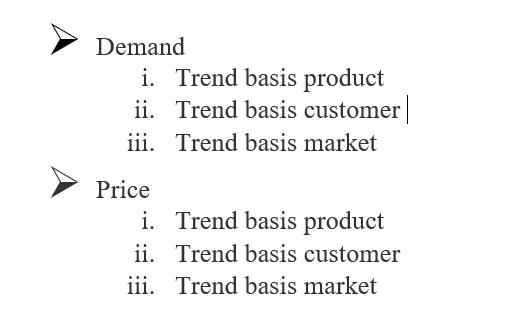
Click to learn more about author Devansh Sharma.
As the world is slowly and gradually recuperating from the pandemic, markets are opening, businesses are restarting, and customers are returning, but the new normal is still full of uncertainty.
What It Means for Businesses
Demand and production have contracted across sectors; for some, it has contracted to as high as 8 to 10 percent from pre-pandemic levels.
This snapshot of a McKinsey & Company report on the impacts of COVID-19 on advanced industries clearly reflects this drop in demand.

This is not new, as every black swan event is followed by pessimism across markets. Customers become cost-conscious, demand slows down, and boardrooms are filled with questions of sustainability. Such adverse scenarios require a transformational approach to strategy. Stalwarts cannot traverse these times based on their past glory. They need to think fast, apply faster, and correct course at lightning speed.
Each company should take a closer look at their pricing strategy to navigate these challenging times. Organizations need to go granular and have a clear view of pricing data coming from the SKU level. Some of the big players have already started doing this, but most industries, by and large, are still stuck in their orthodox ways.
Now is the time to get the adoption of analytics discussion out of the boardroom and let data and insight help us sail through this uncertain period.
What Measures Can Help Organizations Navigate Through the New Normal

Data Integration: Data in silos is a longstanding challenge of the industry, but in current times, this needs our undivided attention. Insights from the data are seen as the panacea for the current problem of a demand slowdown. The more we collate and harmonize data, the better our forecasts and predictions will be, which will further help in faster decisions. There are organizations that have been capturing data for many decades now, but they lack the system to drive insights from it.
Harmonizing data is easier said than done. It is a massive effort for organizations, as data runs in TBs to PBs in some cases; to get it all at one place is a gargantuan task. It should be done in at least two phases. In the first phase, organizations need to integrate data from important data sources, which could help in dynamic pricing and demand and production forecasts. In the second phase, they need to carry out a similar activity over other data sources like HR, finance, administration, etc.
Identifying Trends: Once the data is harmonized, data and analytics teams need to focus on identifying trends in pricing and demands for the products at the SKU level. They should try to achieve as much granularity as possible in this activity, including the following:

Segmentation:
- Segment the Products: Uncertain times (such as today) require a granular approach to business. Organizations need to go beyond their high-level approach based on product mix, product portfolio, and standard pricing. These times warrant a more granular look at product portfolios to identify opportunities to maintain or grow revenues.
Organizations need to benchmark each product on a pricing power vs. competition matrix and look for the products in each market where they command the pricing power, as these will be winning products for them.

- Segment the Customer Base: Segmentation is a powerful technique. It could be used not only to find out the winning product but also to know more about the customer. Organizations need to segment the customer base on the basis of specific attributes such as value drivers (for instance, speed of delivery), relationship type, industry, etc. — and look forward to the winning customer segments. The answer to improved revenue lies in the amalgamation of winning customer segmentation and winning products.
Pricing Analytics/Product and Region-Based Pricing: With identified pockets of opportunities, marketing and analytics teams need to work hand-in-hand to create a compelling value proposition of winning products for the identified customer segments.
For example, Auto OEMs (manufacturing bearings, lights, and axles) could segment the customer base into two-wheeler and four-wheeler producing customers. The demand from the two-wheeler segment has already reached pre-pandemic levels and is growing at a faster pace than the demand from the four-wheeler segment.
If the OEM uses our pricing power vs. competitor dominance framework, it could identify the opportunity pockets and can ramp up production for the two-wheeler segment and also redefine pricing.
Real-Time Tracking: The job is not done yet. One clear differentiator in these times is the response time of organizations; dynamism is the key to survive and flourish in these times. With the social media revolution that has unfolded in the last decade, consumers are quick in responding to the introduced changes. Organizations need to keep pace with it and develop a robust mechanism to collect and analyze broad sets of external data sources — such as web traffic patterns, daily retail panel data, and online prices, and incorporate all of this into the pricing model, which would further help in building a moat around pricing.
Organizations are traversing through untraveled territory in this pandemic and are witnessing subtle changes in customer behavior and demand patterns along the way. These changes started as subtle clues but will evolve into long-term patterns. Organizations need to pick up these subtle clues and develop robust mechanisms that could become their moats in the long run and could widen the gap with their nearest competitors.
